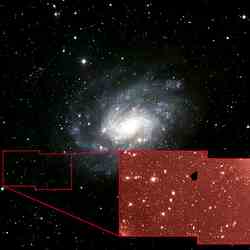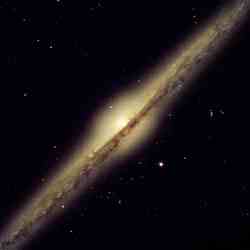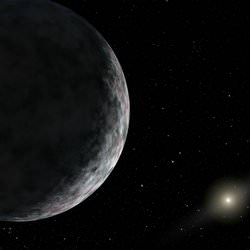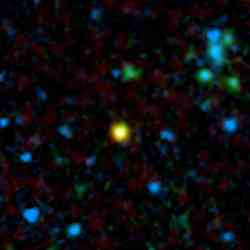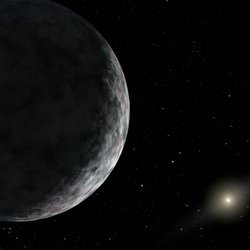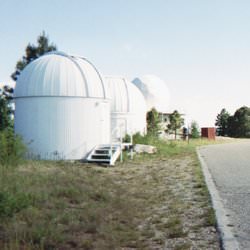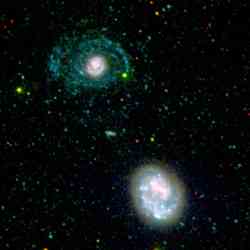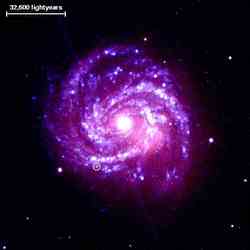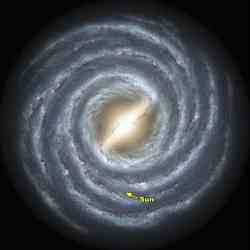
Artist’s impression of the Milky Way. Image credit: NASA/JPL-Caltech/R Click to enlarge
With the help of NASA’s Spitzer Space Telescope, astronomers have conducted the most comprehensive structural analysis of our galaxy and have found tantalizing new evidence that the Milky Way is much different from your ordinary spiral galaxy.
The survey using the orbiting infrared telescope provides the fine details of a long central bar feature that distinguishes the Milky Way from more pedestrian spiral galaxies.
“This is the best evidence ever for this long central bar in our galaxy,” says Ed Churchwell, a UW-Madison professor of astronomy and a senior author of a paper describing the new work in an upcoming edition of Astrophysical Journal Letters, a leading astronomy journal.
Using the orbiting infrared telescope, the group of astronomers surveyed some 30 million stars in the plane of the galaxy in an effort to build a detailed portrait of the inner regions of the Milky Way. The task, according to Churchwell, is like trying to describe the boundaries of a forest from a vantage point deep within the woods: “This is hard to do from within the galaxy.”
Spitzer’s capabilities, however, helped the astronomers cut through obscuring clouds of interstellar dust to gather infrared starlight from tens of millions of stars at the center of the galaxy. The new survey gives the most detailed picture to date of the inner regions of the Milky Way.
“We’re observing at wavelengths where the galaxy is more transparent, and we’re bringing tens of millions of objects into the equation,” says Robert Benjamin, the lead author of the new study and a professor of physics at the University of Wisconsin-Whitewater.
The possibility that the Milky Way Galaxy has a long stellar bar through its center has long been considered by astronomers, and such phenomena are not unheard of in galactic taxonomy. They are clearly evident in other galaxies, and it is a structural characteristic that adds definition beyond the swirling arms of typical spiral galaxies.
The new study provides the best estimates for the size and orientation of the bar, which are far different from previous estimates.
It shows a bar, consisting of relatively old and red stars, spanning the center of the galaxy roughly 27,000 light years in length – 7,000 light years longer than previously believed. It also shows that the bar is oriented at about a 45-degree angle relative to a line joining the sun and the center of the galaxy.
Previously, astronomers debated whether a presumed central feature of the galaxy would be a bar structure or a central ellipse – or both. The new research, the Wisconsin astronomers say, clearly shows a bar-like structure.
“To date, this is the best evidence for a long bar in our galaxy,” Benjamin asserts. “It’s hard to argue with this data.”
The Spitzer Space Telescope was lofted into orbit in August of 2003. It consists of a telescope and three science instruments, including the Infrared Array Camera, the primary instrument used for the new survey, known as GLIMPSE for Galactic Legacy Mid-Plane Survey Extraordinaire.
NASA’s Jet Propulsion Laboratory (JPL), Pasadena, Calif., manages the Spitzer Space Telescope mission for NASA’s Science Mission Directorate, Washington, D.C. Science operations are conducted at the Spitzer Science Center in Pasadena. JPL is a division of the California Institute of Technology.
Original Source: UW-Madison News Release

